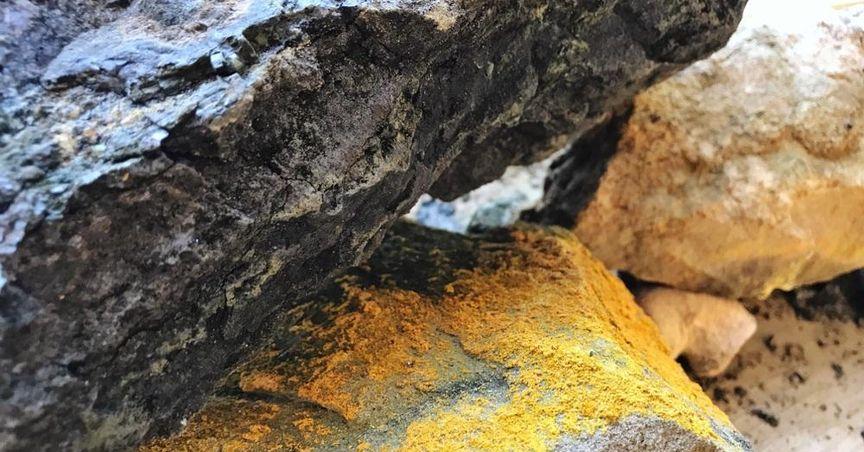Highlights:
- Historical 19,000metre diamond drill core from the Ivigtût project in Greenland is undergoing re-analysis to support an expanded rare earth elements (REE) resource update.
- Environmental assessments and a European Union funding application under the Critical Raw Materials Act are progressing in tandem with detailed geological mapping.
- Negotiations for Northern Territory uranium assets continue after terminating a previous agreement with Oz Yellow Uranium Limited.
Eclipse Metals Ltd (ASX:EPM) is advancing its strategic initiatives on multiple fronts, with renewed focus on rare earth element (REE) exploration in Greenland and renewed discussions regarding its uranium assets in Australia. The company has embarked on a detailed re-analysis of 19,000 metres of historical diamond drill core from the Ivigtût project—a collection of samples preserved since the 1940s in a government facility. These cores now form the foundation for a forthcoming REE resource update that could redefine the exploration landscape at Ivigtût.
Greenland REE Project: A Renewed Focus on Historical Data
The Ivigtût project area in Greenland is central to EPM’s efforts to update and expand its REE resource base. Selected samples from the historical diamond drill core have been exported to a European laboratory where advanced analytical techniques are being applied. Preliminary data previously indicated an inferred mineral resource estimate (MRE) of 1.18 million tonnes at 6,859 parts per million total rare earth oxides (TREO), translating to approximately 8,074 tonnes TREO when using a 2,000ppm cut-off. These figures, combined with geological mapping over a 5kilometre by 2kilometre area at Grønnedal, highlight the expansive potential of the deposit.
Petrological studies and detailed geological mapping are underway to better delineate the mineralisation patterns across a primary exploration target that spans 3 kilometres by 800 metres of ferrocarbonatite. Current data suggest that the deposit extends from the surface to a depth of 9.5 metres and remains open in all directions—a characteristic that bodes well for future drilling programs designed to increase the current resource estimate.
Comprehensive Environmental Assessments and EU Funding Efforts
In parallel with resource evaluation, environmental assessments form a critical pillar of the project’s advancement. A white paper has been submitted for public consultation in Greenland, serving as a step toward obtaining the necessary mining licence. The scoping phase of both the Environmental Impact Assessment (EIA) and the Social Impact Assessment (SIA) has been completed, receiving positive feedback from key bodies such as the Danish Centre for Environment and Energy (DCE) and the Greenland Institute of Natural Resources (GINR).
Recent environmental initiatives include water and seaweed sampling around the Ivigtût pit area to establish current conditions against historical data from a 1995 report. This initiative aims to ensure that all environmental benchmarks are met prior to dewatering activities, thereby safeguarding local ecosystems. In addition, EPM has submitted an application for funding under the European Union’s Critical Raw Materials Act (CRMA), a strategic move that could streamline permitting processes and facilitate enhanced financing if the Ivigtût polymetallic project is designated as a strategic asset. A decision on the application is anticipated in March 2025, potentially accelerating the project’s timeline within the broader framework of EU initiatives focused on renewable energy and advanced technologies.
Strategic Uranium Asset Negotiations in Australia
While the focus in Greenland intensifies, EPM is simultaneously engaged in negotiations concerning its uranium assets in Australia. Following the termination of a previous agreement with Oz Yellow Uranium Limited, the company is currently reviewing new proposals from a midtier, uraniumfocused entity along with other interested parties. The discussions pertain primarily to the Ngalia Basin Uranium Prospects and the Liverpool Uranium Project, two assets that have drawn considerable attention due to their potential within the Northern Territory.
An additional strategic move has been the relinquishment of a portion of exploration licence EL32080 in the northern Ngalia Basin, following an extensive assessment of historical exploration data. This decision reflects a broader strategy to concentrate efforts on highpotential assets while ensuring that resources are allocated efficiently in the current market landscape.
A Comprehensive Strategy for Resource Development
The multifaceted strategy pursued by ASX:EPM underscores a commitment to leveraging historical data, rigorous environmental assessments, and strategic international funding opportunities. The re-analysis of historical drill core from Ivigtût offers a unique opportunity to refine the understanding of Greenland’s REE mineralisation, potentially leading to an expanded resource base that could support future exploration and development. At the same time, progress in environmental and social impact assessments aligns with stringent regulatory requirements and community engagement protocols, laying the groundwork for a smooth permitting process.
On the uranium front, the current negotiations in Australia represent a realignment of strategic priorities. By engaging with multiple potential partners following the termination of the previous agreement, EPM appears focused on ensuring that its uranium assets are positioned to capture emerging opportunities in the global resource market.
This period of activity marks a significant chapter for Eclipse Metals Ltd (ASX:EPM) as it navigates the complexities of modern resource development. With a comprehensive approach that integrates historical data analysis, environmental stewardship, and international strategic partnerships, the company is well poised to advance its projects in both Greenland and Australia, setting the stage for future developments that could reshape its asset portfolio in the coming years.




